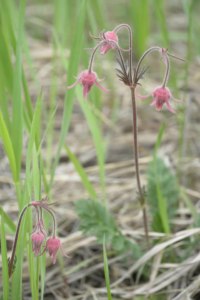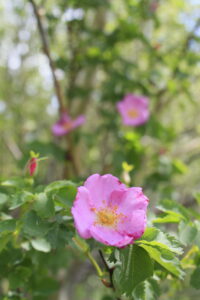To celebrate National Indigenous Peoples Day 2020, Meewasin feels it is critical to acknowledge and honour that the land on which we enjoy our days and steward in the Meewasin Valley is in Treaty Six Territory, the traditional territory of the Cree people and the homeland of the Métis people. Meewasin recognizes this as part of our reconciliation efforts and values the original caretakers of the land to steward the land of Treaty Six Territory.
Integrating Indigenous Perspectives
Over the next year, Meewasin, which itself is the Cree word for beautiful, is working on the Western Diversification project to expand on the Indigenous content available in the Valley and ongoing work to better integrate Indigenous perspectives into conservation and interpretation.
National Indigenous Peoples Day
To celebrate National Indigenous Peoples Day, Meewasin wants to recognize the significant historical and cultural use of native plants in indigenous culture. Our friends at Wanuskewin will also be hosting a live celebration for on Sunday, June 21st as well – It will be an afternoon of music and dance performances, storytelling, interpretation of the Wanuskewin valley, and a chance to explore the history of the land. Check out the event on their Facebook page.
To recognize the significant historical and cultural use of native plants in Indigenous culture, we have highlighted 6 different wildflowers that you can find in the Meewasin Valley and some information about their traditional uses.

Three Flowered Avens (Sooyáíaiihtsi) These flowers named for growing in groups of three, can be boiled down to form a gel, which is used as an ointment on cuts and sores. Traditionally the boiled root extract was also used for eyewash. Seeds that are boiled to make tea are also known to be good for sore throats. Seed pods can also be crushed and used as a perfume! [1]
Buffalo Bean (Otsiikin) Elders used the flower to dye a skin bag or arrows yellow. They would make a strong tea and soak whatever they wanted colored in the tea. All parts of Buffalo Bean are considered poisonous, so the tea is not safe to drink. [1]
Giant Hyssop (Ka-wikipakahk, Cree) Giant Hyssop is commonly used to make teas or flavour food. Cree people add the leaves to store bought tea to improve the flavour; the leaves were also used as a medicinal tea. The flower head could be chewed as a breath freshener. You can dry some leaves to make tea, or simply enjoy watching the wildlife these flowers attract. [2]

Wild Rose/Prickly Rose (Kaminakuse, thorn plant, Cree) Most parts of the rose plant may be eaten with the rose hips being very healthy. Petals and hips are eaten raw or cooked. The young green shoots may be peeled and eaten raw or cooked as a pot herb. Roots and stems were used to make medicine, the inner bark was a tobacco. You can also make tea from the rose petals, using about one cup of rose petals for every one to two cups of boiling water. Ojibwa and other indigenous people used green rose hips to make toy pipes for children and sometimes the firm, ripe rose hips were strung together to make a necklace. [2]

Blanket Flower (Gaillardia aristata) Gaillardia was used as a medicine and the flowers were put into soups. Flowers were also rubbed on rawhide bags to waterproof them. [1]
Western Red Lily (Wapayoominusk, Cree) The flowers, seeds, and bulbs were all used as food; Cree and other First Nations people would eat the bulb fresh or dried. The roots and flowers were used medicinally by First Nations people living within the plants range, including the Ojibwa, Algonquin and Malecite. [2] The plant is a protected species under the Saskatchewan Emblems Act and the roots can’t be harvested.
References
| [1] | G. E. Network, “Nitsitapiisinni Stories and Spaces: Exploring Kainai Plants and Culture,” 2016. [Online]. Available: https://galileo.org/kainai/three-flowered-avens/. |
| [2] | S. Grieve, “Native Plants for the Playground and,” Sakatchewan Publications Centre, p. 1, 2010. |




